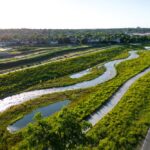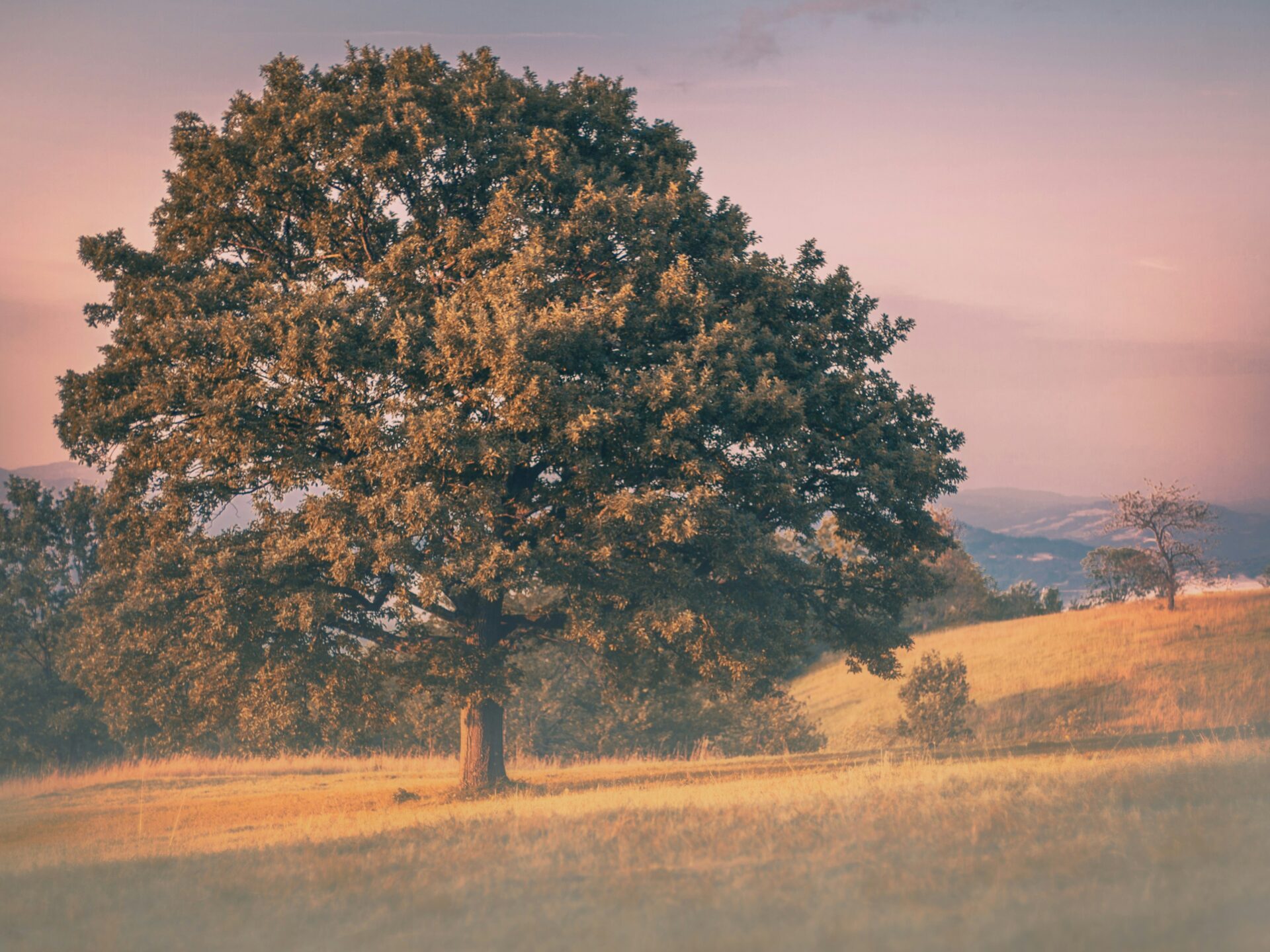
International Day of Rivers: Go With The Flow
March 14, 2024
Welcome Luis and Vitor From the YLAI Fellowship Program!
March 26, 2024
International Day of Rivers: Go With The Flow
March 14, 2024
Welcome Luis and Vitor From the YLAI Fellowship Program!
March 26, 2024Blog & News

March 21, 2024
Sudden Oak Death: A Threat to Preservation and Conservation
Author: Ellia Simmons
When people think about the trees in California, they may think about the state tree, the larger-than-life California redwood (Sequoia sempervirens), or imagine the iconic palms along sunset boulevard, evoking the California dream. However, for Californians, it could be argued that no tree genus is more important than the oak. Over 20 species of oaks are native to California, which range throughout the state.
Vegetation types dominated by oak trees cover about 4 million hectares in California (Bolsinger 1988), or roughly 10% of the state’s land area. These extensive oak woodlands play a crucial role in maintaining ecological balance and biodiversity. Oak woodlands play a critical role in protecting soils from erosion and landslides, regulating water flow in watersheds, and maintaining water quality in streams and rivers (Bernhardt and Swiecki, n.d.). The deep-rooted oaks help prevent erosion, while the leaf litter enriches the soil and promotes nutrient cycling.
Comprising various oak species such as the iconic valley oak (Quercus lobata) and the coast live oak (Quercus agrifolia), these woodlands serve as vital habitats for a diverse array of plant and animal species. In fact, oak woodlands have higher levels of biodiversity than virtually any other terrestrial ecosystem in California. At least 300 terrestrial vertebrate species (Block, Morrison, and Verner 1990), 1,100 native vascular plant species (CalFlora Database 1998), 370 fungal species, and an estimated 5,000 arthropod species (Swiecki et al. 1997a) are associated with California oak woodlands.
The intricate structure of the oak canopy provides shelter, nesting sites, and food resources for numerous bird species, so much so that the loss and fragmentation of oak woodlands is the central reason for significant declines in lark sparrow (Chodestes grammacus), oak titmouse (Baeolophus inornatus), Nuttall’s woodpecker (Picoides nuttalli), yellow-billed magpie (Pica nuttalli), white-tailed kite (Elanus leucurus), ash-throated flycatcher (Myiarchus cinerascens), and western bluebird (Sialia Mexicana). Additionally, the acorns produced by oak trees are a critical food source for various wildlife, such as deer and squirrels (“Help Preserve Oak Woodlands” 2015).
These woodlands also act as carbon sinks, aiding in climate regulation. By recognizing the ecological importance of oaks, it is clear that sudden oak death (or SOD) is a monumental threat to the preservation and restoration of California's oak woodlands.
SOD is a tree disease caused by the fungus-like plant pathogen Phytophthora ramorum. Phytophthora ramorum is one of the most important biological sources of tree mortality in California. Phytophthora species are water molds, and well-known plant pathogens, that produce plentiful spores in moist, humid conditions. The pathogen spreads mainly via wind from canopy infections, but can also spread through watersheds, plant material, or human activity. While most foliar hosts such as California bay laurel (Umbellularia californica) do not die from the disease, they play a key role in the spread of Phytophthora ramorum by acting as breeding grounds for inoculum. The pathogen is spread to coast live oak and tanoak (Notholithocarpus densiflorus), which then develop vascular “trunk” infections. Trunk hosts such as coast live oaks and tanoaks are considered terminal hosts, and result in tree mortality once infected.
Since the mid-1990s, Phytophthora ramorum has killed millions of tanoak trees and several oak tree species (coast live oak, California black oak [Quercus kelloggii], Shreve oak [Quercus parvula var. shrevei], and canyon live oak [Quercus chrsolepis]), and has been the cause of twig and foliar diseases in numerous other plant species, including California bay laurel, Douglas-fir (Pseudotsuga menziesii) and coast redwood. The first Phytophthora ramorum infested rhododendron (Rhododendron spp.) nursery plants were identified in 2001 (in Santa Cruz County, CA). However, the U.S. nursery industry was not widely impacted by the pathogen until 2004, when a few large West Coast nurseries inadvertently shipped over a million potentially infected rhodendrons and camellias (Camellia spp.) throughout the United States with detections in 176 nurseries in 21 states. The true origin of Phytophthora ramorum is not known.
Unfortunately there is no chance of a full eradication of the disease. The key to mitigating the effect of SOD is understanding the pathogen itself. SOD infects three main species: the coast live oak, the California bay laurel, and the tanoak, which often grow in the same woodlands and ecosystems.
-
In coast live oaks, SOD causes bole infections and results in tree mortality but does not produce inoculum to spread the disease to other hosts.
-
In California bay laurel, SOD causes minor leaf blight but is intrinsic for the production of inoculum and supports sporulation (the spread of the disease).
-
In tanoak, SOD causes bole infections and results in tree mortality and does produce inoculum that supports sporulation.
This information can allow us to utilize silvicultural mitigation, which refers to the cutting or removal of specific trees to mitigate disease outbreak. This may mean the removal of California bay laurel from stands of oaks that are vulnerable to the disease. This could also influence replanting and revegetation plans, to not include the three key trees in the same stand to protect against the inoculation of SOD. Other preventive measures include thoroughly cleaning shoes, vehicles, tools, and equipment before entering into a stand that has at-risk species. Phosphate control also shows promise as a treatment for SOD, although its efficacy may be limited. A fungicide phosphonate (a neutralized form of phosphorous acid) can be applied, which then travels through a tree’s vascular system to stimulate resistance to pathogen invasion by producing defensive compounds and thickening protective plant cell layers (Lee et.al. 2011). However, this treatment only works on true oaks.
The impacts of SOD are compounded by the pressure oak woodlands face from increasing development. The California Oak Foundation projects that 1 million acres of oak woodland will succumb to development over the next 30 years and 750,000 more acres will be threatened. This makes it especially imperative to implement measures to help guard against the spread of SOD and to achieve mitigation success, when in place, to support these critical woodlands.

Photo by Joseph O' Brien, USDA Forest Service
References
- Bernhardt, Elizabeth, and Tedmund Swiecki. n.d. “Ecological Importance of California Oak Woodlands.” https://oaks.cnr.berkeley.edu/wp-content/uploads/2019/03/Ecological-Importance-of-CA-OW.pdf.
- Block, William M, Morrison, Michael, and Jared Verner .1990. Wildlife and oak-woodland interdependency. Fremontia 18:72-76
- Bolsinger, Charles L. 1988. The Hardwoods of California’s Timberlands, Woodlands, and Savannas.
- CalFlora Database .1998. UC Berkeley Digital Library Project. http://elib.cs.berkeley.edu:8080/calflora/
- “Help Preserve Oak Woodlands.” 2015. Audubon California. July 2, 2015. https://ca.audubon.org/conservation/help-preserve-oak-woodlands#:~:text=Birds%20rely%20on%20oaks%20and%20their%20surrounding%20environment.
- Lee, Chris, Yana Valachovic, and Matteo Garbelotto. 2011. “Protecting Trees from Sudden Oak Death Before Infection.” University of California Department of Agriculture and Natural Resources.
- Swiecki, Tedmund, Elizabeth Bernhardt, Richard Arnold, and Jerry Powell. 1997. “The California Oak Disease and Arthropod (CODA) Database.” USDA Forest Service Gen. https://www.fs.usda.gov/psw/publications/documents/psw_gtr160/psw_gtr160_04g_swiecki2.pdf.
